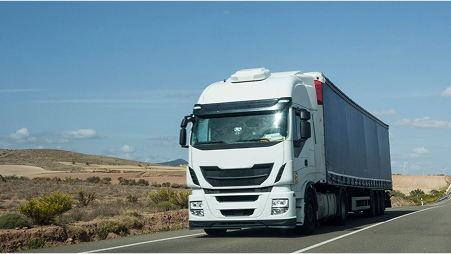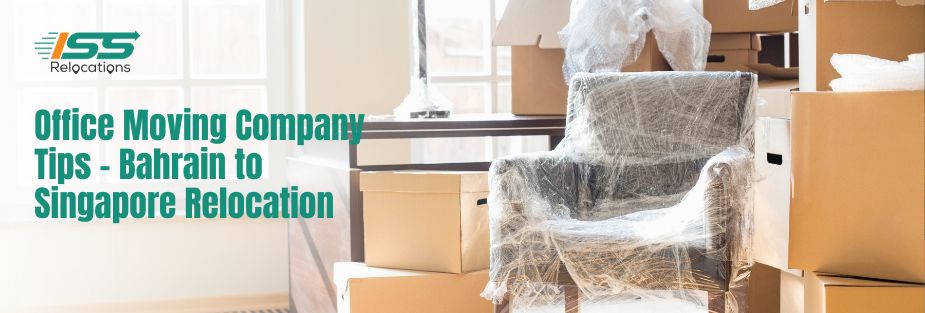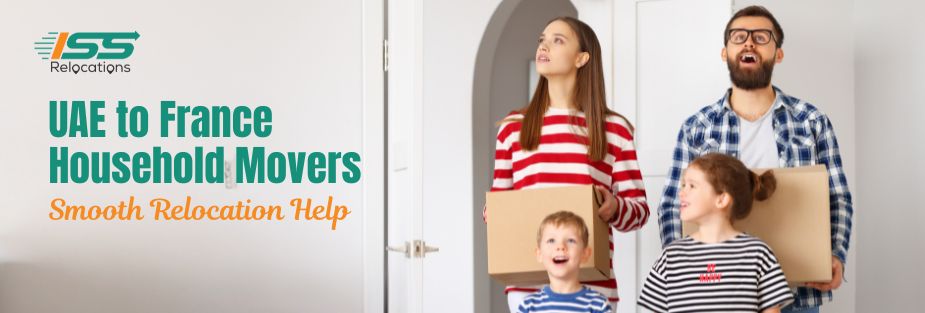
10 Tips for a Smooth Office Move A Comprehensive Guide
Moving offices can be a daunting task for any business, regardless of its size. A smooth office move can ensure minimal disruption to daily operations and maintain the morale of employees. However, a poorly planned office move can result in significant downtime, lost revenue, and damage to equipment or furniture. In this blog, we will provide a comprehensive guide with ten tips for a smooth office move.
An office move refers to the process of relocating a business from one physical location to another. This can be within the same building, across town, or even to a new country. Office moves can be initiated for various reasons, including expansion, downsizing, lease expiry, or seeking a more desirable location.
A smooth office move is essential for a business as it can affect employee productivity, customer satisfaction, and revenue. A well-planned move ensures minimal downtime and reduces the risk of damage or loss of equipment, furniture, or sensitive information.
This guide will provide ten tips for a smooth office move, including planning, budgeting, communication, packing, labelling, equipment and furniture, technology, utilities and services, safety, and security, and follow-up.
Following Tips for a Smooth Office Move A Comprehensive Guide
Planning
A. Develop a comprehensive moving plan
Developing a comprehensive moving plan is crucial for a smooth office move. This plan should include a detailed checklist of all tasks, the moving timeline, and responsibilities assigned to each team member. The plan should also identify potential challenges and provide contingency measures.
B. Assign a moving team
Assigning a moving team is essential to ensure that the office move runs smoothly. This team should consist of employees from various departments who can assist with packing, labelling, and coordinating with external vendors.
C. Determine the timeline
Determining the timeline is critical to ensure that the office move is completed within the expected time frame. The timeline should include specific deadlines for each task, including packing, disassembling equipment, and transporting furniture.
Budgeting
A. Set a budget
Setting a budget is essential for a successful office move. This budget should cover all expenses, including packing materials, moving company fees, and potential additional costs. The budget should also allow for unexpected expenses or contingencies.
B. Get quotes from multiple moving companies
Getting quotes from multiple moving companies can help businesses to compare costs and services. It is essential to choose a reliable and experienced moving company that can handle the size and complexity of the office move.
C. Factor in additional costs
Factoring in additional costs is crucial to ensure that the budget covers all expenses. These additional costs may include storage fees, cleaning fees, and equipment upgrades.
Communication
A. Communicate the move to employees
Communicating the move to employees is crucial to ensure that they are aware of the relocation and understand their responsibilities. This communication should include the moving timeline, packing instructions, and any changes in job responsibilities.
B. Notify clients and vendors
Notifying clients and vendors of the office move is essential to ensure minimal disruption to business operations. This communication should include the new office address, contact information, and any changes in service.
C. Keep open communication with the moving team
Keeping open communication with the moving team is crucial to ensure that the office move runs smoothly. This communication should include regular updates, any changes to the moving plan, and potential challenges.
Packing and Labelling
A. Develop a packing plan
Developing a packing plan is crucial to ensure that all equipment and furniture are packed correctly and transported safely. The plan should include instructions on how to pack sensitive information, equipment, and furniture.
B. Label boxes clearly
Labelling boxes clearly can ensure that they are transported to the correct location in the new office and that employees can easily find the items they need. When labelling boxes, consider the following tips:
- Use a labelling system that works for your business. This could include color-coded labels, numbered labels, or a combination of both.
- Label boxes on multiple sides to ensure they are visible from any angle.
- Use a permanent marker to label boxes, as other writing materials may smudge or fade during transport.
- Include information on the contents of the box, the department it belongs to, and the destination location in the new office.
C. Use proper packing materials
Using proper packing materials can help protect office equipment and furniture from damage during transport. When packing, consider the following tips:
- Use sturdy boxes that can withstand the weight of the items being packed.
- Use packing materials such as bubble wrap, packing peanuts, and packing paper to cushion fragile items.
- Use furniture blankets or moving pads to protect furniture during transport.
- Seal boxes with packing tape to prevent items from falling out or shifting during transport.
Equipment and Furniture
A. Assess the need for new equipment and furniture
Before the move, assess whether any new equipment or furniture is needed for the new office space. This could include new desks, chairs, or technology equipment. Consider the following when assessing the need for new equipment and furniture:
- Will the current equipment and furniture fit in the new office space?
- Will new equipment and furniture improve productivity and efficiency?
- Is there room in the budget for new equipment and furniture?
B. Disassemble and pack equipment properly
Before packing equipment, disassemble it properly to ensure that it is transported safely. Consider the following when disassembling and packing equipment:
- Take photos or make notes of how equipment is assembled to make reassembly easier.
- Use proper packing materials to cushion equipment during transport.
- Label each part of the equipment to ensure it is reassembled correctly.
C. Use proper moving equipment for furniture
When moving furniture, use proper moving equipment to ensure that it is transported safely. Consider the following when moving furniture:
- Use dollies or hand trucks to move heavy furniture.
- Use furniture sliders to protect floors from scratches.
- Use furniture blankets or moving pads to protect furniture during transport.
Technology
A. Back up important data
Before the move, back up important data to prevent loss or damage during transport. Consider the following when backing up data:
- Use a cloud-based backup system to ensure data is accessible from any location.
- Make sure all data is backed up before the move.
- Label backup drives clearly and transport them separately from other equipment.
B. Ensure technology is packed and transported properly
When packing technology equipment, ensure it is packed and transported properly to prevent damage. Consider the following when packing and transporting technology:
- Use proper packing materials to cushion equipment during transport.
- Label each part of the equipment to ensure it is reassembled correctly.
- Transport technology equipment separately from other equipment to prevent damage.
C. Reinstall technology at the new office
After the move, reinstall technology equipment at the new office. Consider the following when reinstalling technology:
- Use photos or notes from the disassembly process to make reinstallation easier.
- Test all equipment to ensure it is functioning properly.
- Ensure all cables and wires are properly connected.
Utilities and Services
A. Coordinate with utilities and services
Before the move, coordinate with utilities and services to ensure a smooth transition to the new office. Consider the following when coordinating with utilities and services:
- Start early: Coordinate with utilities and services at least a month in advance of the move. This will give enough time to ensure everything is arranged and scheduled properly.
- Create a checklist: Create a checklist of all the utilities and services that need to be coordinated. This will help ensure that nothing is missed.
- Notify the correct parties: Make sure to notify the correct parties for each utility and service. For example, if the electricity and gas are provided by different companies, notify each company separately.
B. Set up new utilities and services
Once you have coordinated with the utilities and services, it’s time to set them up at the new office. Here are a few things to keep in mind:
- Confirm installation dates: Confirm the installation dates with each utility and service provider. Make sure that the dates work with the moving schedule and that someone will be available to meet the service providers at the new office.
- Provide access: Make sure that the service providers have access to the new office. If necessary, arrange for someone to meet them and let them in.
- Test everything: Once the utilities and services are set up, test everything to ensure they are working properly. This includes checking the electricity, water, gas, internet, and phone.
C. Schedule internet and phone installation
Internet and phone installation is an essential part of setting up utilities and services. Here are a few tips to keep in mind:
- Choose the right provider: Choose a provider that offers the right package for your business needs. Consider factors such as speed, reliability, and cost.
- Schedule installation early: Schedule installation at least a week in advance of the move. This will ensure that everything is set up and working properly before the move.
- Consider a backup plan: Consider having a backup plan in case the internet or phone installation is delayed or doesn’t work properly. This could include using a temporary hotspot or phone service until everything is resolved.
By coordinating with utilities and services early and following these tips, businesses can ensure a smooth transition to their new office space.
Safety and Security
A. Develop a safety plan for moving day
Develop a safety plan for moving day that includes safety precautions to ensure that everyone involved in the move remains safe throughout the process. This plan should address the following areas:
- Moving team safety: The safety of the moving team is paramount during an office move. Make sure the team has the necessary equipment, such as gloves and back braces, to avoid injury while lifting and moving heavy items. Also, ensure that they are trained on proper lifting techniques to prevent back injuries.
- Employee safety: It’s essential to communicate safety guidelines to your employees before the move. Make sure they understand what areas will be off-limits and what safety precautions they should take during the move.
- Building safety: Moving day can be chaotic, and it’s important to make sure the building is safe for everyone. This includes securing elevators, setting up barriers to prevent people from tripping, and ensuring that fire exits are clear.
B. Protect sensitive information
During an office move, it’s essential to protect sensitive information from falling into the wrong hands. Make sure that all confidential documents and files are properly packed and labelled. Consider using secure boxes or locking file cabinets for added protection. You may also want to consider using a professional shredding service to securely dispose of any sensitive documents you no longer need.
C. Ensure the new office is secure
Before moving day, make sure that the new office space is secure. This includes ensuring that all locks are functional and that there are no security breaches. You may also want to consider installing a security system if one is not already in place. By taking these steps, you can help ensure the safety and security of your employees and your business.
Follow-Up
A. Conduct a post-move evaluation
After the move is complete, it’s important to conduct a post-move evaluation to assess how the move went and identify areas for improvement. This evaluation should include feedback from employees, the moving team, and any other stakeholders involved in the move.
B. Address any issues that arise
During the post-move evaluation, identify any issues that arose during the move and develop a plan to address them. This may include scheduling repairs or replacements for damaged equipment or addressing any communication issues that occurred during the move.
C. Celebrate a successful move
Finally, celebrate a successful move with your team. Moving an office can be a challenging process, and it’s important to acknowledge everyone’s hard work and dedication throughout the process. Consider hosting a team lunch or a happy hour to celebrate the successful move.
Conclusion
In conclusion, a successful office move requires careful planning, attention to detail, and effective communication. By following these 10 tips, businesses can minimize disruptions and ensure a smooth transition to their new office space. Working with a professional moving company like ISS Relocations can provide added support and peace of mind throughout the moving process.
Plan Stress-free Move with Top Moving Company in UAE - ISS Relocations

Frequently Asked Questions
How to plan an office relocation?
Planning an office move requires setting a timeline, creating a checklist, notifying employees and clients, and hiring a reliable moving service. ISS Relocations specializes in seamless office moves by managing logistics, packing, transportation, and setup, ensuring minimal downtime for businesses.
How do you request for office relocation?
To request an office relocation, present a proposal outlining the benefits, budget, and logistical requirements. ISS Relocations assists businesses in planning efficient office moves, ensuring all necessary approvals and procedures are handled professionally.
What is office relocation?
Office relocation is the process of moving a business to a new location, whether within the same city or internationally. ISS Relocations provides tailored solutions for packing, transportation, and reinstallation, helping companies transition smoothly with minimal disruption.
How do I announce my office relocation?
Announce your office move through internal emails, press releases, website updates, and social media. ISS Relocations can help structure a relocation strategy, ensuring all stakeholders are informed and the transition is efficiently executed.
How do you inform clients of an office move?
Notify clients through email, newsletters, or social media, ensuring they have updated contact information and service continuity details. ISS Relocations provides structured office move plans that include client communication strategies for a smooth transition.
How do you say your business is moving?
When announcing a business move, highlight the benefits, new location details, and transition timeline. ISS Relocations assists in coordinating all aspects of an office move, including communication strategies to maintain business relationships.
How do you say move on professionally?
In a business setting, moving on professionally involves emphasizing growth, opportunity, and efficiency. ISS Relocations supports businesses with structured moving solutions, ensuring a seamless and strategic relocation.
How to communicate an office move?
Effective communication includes updating employees, clients, and vendors via emails, meetings, and official statements. ISS Relocations provides expert assistance in managing all aspects of an office move, ensuring clear communication and minimal disruptions.
Moving Company - Recent Blog
Stay informed and prepared for your next move with our latest blogs on moving services in the UAE. From expert packing tips to international relocation guides, ISS Relocations brings you up-to-date insights to make your moving experience smoother, safer, and stress-free.










